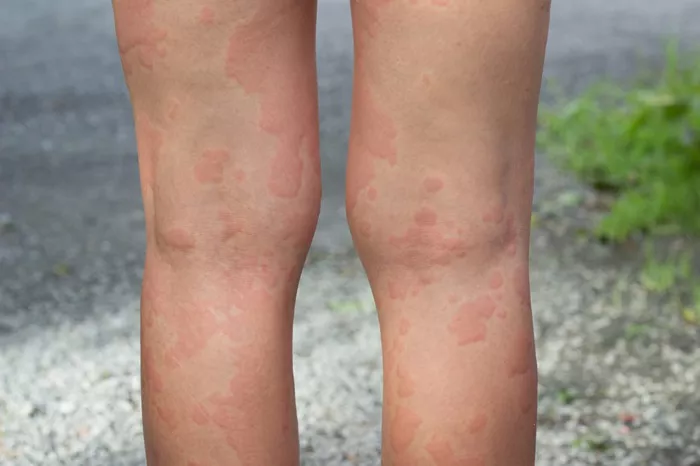Skin sagging is one of the most visible signs of aging. It happens slowly, often unnoticed at first. Then one day, you catch your reflection and notice your jawline isn’t as sharp, your cheeks have less volume, and the skin on your neck seems looser. This natural, biological process affects everyone, but the causes, severity, and timing can vary widely. It’s not just about growing older—it’s about what happens to your skin over time, how you treat your body, and what you might be doing to accelerate the process without realizing it.
Skin is more than just a covering. It’s a complex, dynamic organ composed of three main layers: the epidermis (outer layer), the dermis (middle layer), and the hypodermis (deepest layer). The dermis plays a crucial role in sagging because it contains collagen and elastin—proteins that keep skin firm, resilient, and youthful. As we age, the production of these proteins slows down. Collagen begins to break down, and elastin loses its stretch, resulting in thinner, weaker, and less supported skin.
Why Skin Starts to Lose Its Firmness
Age is the most obvious factor behind sagging skin, but it’s not the only one. In fact, many people experience premature sagging due to avoidable lifestyle factors. The natural aging process, known as intrinsic aging, involves the gradual decline in skin’s structural support. This includes not only collagen and elastin loss but also a decrease in the skin’s natural hydration and fat stores, particularly in the face, neck, and hands.
Then there’s extrinsic aging—damage that comes from outside sources. The biggest culprit? Sun exposure. Ultraviolet (UV) radiation penetrates the skin and breaks down collagen fibers, accelerating the aging process. This is known as photoaging, and it can begin as early as your twenties if sun protection isn’t a part of your routine. Other contributors include smoking, which narrows blood vessels and reduces oxygen flow to the skin, and poor nutrition, which deprives the skin of essential building blocks needed for repair.
Weight fluctuations also play a significant role. Rapid weight loss—particularly after being overweight—can result in excess skin that has lost the ability to bounce back. As fat disappears from beneath the skin, especially in the face, the supportive volume vanishes, leaving skin to droop.
How Hormones Influence Skin Elasticity
Hormones significantly influence skin quality and elasticity, especially during major life transitions. Estrogen, for instance, plays a vital role in maintaining collagen production. During menopause, estrogen levels decline rapidly, often resulting in noticeable changes to skin texture, thickness, and firmness. This is why many women report sudden sagging around the jawline, eyes, and neck during this stage of life.
Cortisol, the stress hormone, also has a direct impact. Chronic stress leads to elevated cortisol levels, which can trigger collagen breakdown and slow down skin regeneration. The combination of hormonal shifts and stress-related damage creates the perfect storm for sagging, dull, and prematurely aged skin.
Are There Ways to Prevent Skin from Sagging?
While we can’t completely halt the aging process, we can certainly slow it down. Prevention begins with consistent and long-term skincare habits. Sunscreen remains the most important defense against sagging. Daily application—even on cloudy days—helps preserve collagen and prevent UV-induced damage. Antioxidants like vitamin C, both in your diet and in skincare products, can also shield skin from environmental harm.
Hydration is equally essential. Well-moisturized skin is plumper, more elastic, and better able to defend itself against damage. Drinking plenty of water, using hydrating serums, and applying moisturizers with ingredients like hyaluronic acid and ceramides help maintain a healthy skin barrier.
Sleep is another underrated tool. During deep sleep, the body undergoes cellular repair, including skin regeneration. Sleep deprivation interferes with collagen production and increases inflammation, both of which speed up skin aging. Getting seven to nine hours of quality sleep each night can go a long way in supporting skin resilience.
The Role of Nutrition in Skin Firmness
What you eat shows up on your skin. A diet high in sugar and processed foods contributes to glycation, a chemical process where sugar molecules bind to collagen and elastin, making them stiff and more prone to breakage. This leads to wrinkling and sagging over time.
Conversely, a diet rich in antioxidants, healthy fats, and lean proteins can support skin structure. Omega-3 fatty acids found in fish, flaxseeds, and walnuts strengthen cell membranes and reduce inflammation. Collagen-rich foods like bone broth, chicken skin, and fish skin may also support skin repair, though research is still ongoing. Vitamins A, C, and E, as well as minerals like zinc and selenium, play a critical role in collagen synthesis and skin maintenance.
Protein intake is especially important as it provides amino acids that are essential for collagen formation. Without enough protein, your body may struggle to repair and build skin tissues, leading to more pronounced sagging and wrinkles.
Exercise and Its Surprising Impact on Skin
Most people associate exercise with weight control, but its benefits go deeper—literally. Regular physical activity improves circulation, which means more oxygen and nutrients reach your skin cells. This increased blood flow supports collagen production and helps the skin retain its elasticity.
Resistance training, in particular, offers unique advantages. By building muscle under the skin, you can create a firmer, more lifted appearance, especially in areas like the arms, thighs, and face. Facial exercises, though sometimes debated, may also help tone the muscles beneath the skin, creating subtle improvements in tightness over time.
However, overtraining or excessive cardio combined with low body fat can contribute to volume loss in the face, which may accentuate sagging. The key is balance—maintaining strength, supporting circulation, and preserving the fat pads that give your face youthful contours.
Non-Surgical Treatments That Work
Advances in dermatology and aesthetics have introduced several non-invasive treatments that can significantly improve skin firmness. These procedures don’t require surgery or long recovery times and are increasingly popular for people in their 30s, 40s, and beyond.
Radiofrequency (RF) and ultrasound treatments work by heating the deeper layers of the skin, stimulating collagen and tightening tissue over time. Microneedling, especially when combined with radiofrequency (known as RF microneedling), creates micro-injuries that prompt the skin to repair itself, producing more collagen and improving elasticity.
Laser treatments like Fraxel target the skin’s deeper layers to encourage new collagen formation. They also improve skin texture and tone, which can reduce the overall appearance of sagging. Injectables like dermal fillers restore lost volume in the cheeks, under the eyes, and along the jawline, offering an instant lifting effect.
Though results may vary, these treatments provide noticeable improvements when performed by qualified professionals. Consistency and maintenance are key, as the effects are not permanent but can be extended with follow-up care and good skin habits.
When Surgery Becomes an Option
For more advanced sagging, particularly in the lower face and neck, surgical options may provide the most dramatic and long-lasting results. Facelifts, neck lifts, and eyelid surgeries are among the most common procedures aimed at repositioning and tightening skin and underlying muscles.
While surgery involves higher costs and recovery time, modern techniques are far more refined than in decades past. A good plastic surgeon can create natural-looking results without the “pulled” appearance often associated with early facelifts. Most patients see results that last 5 to 10 years or longer, depending on their skin type, lifestyle, and overall health.
Surgery is not for everyone, but for those seeking a significant transformation, it can be a worthwhile investment. The decision should always be made after thorough consultation with a board-certified plastic surgeon and realistic expectations about the outcome and recovery process.
Emotional Impact of Sagging Skin
The physical aspects of skin sagging are only part of the story. Emotionally, it can affect self-esteem, confidence, and how people feel about aging. In a society that often values youthfulness, visible signs of aging may trigger feelings of insecurity or social anxiety, particularly in industries or cultures that place high value on appearance.
Many people find themselves spending more time in front of the mirror, feeling disconnected from the face they once knew. This emotional weight can sometimes be heavier than the sagging itself. It’s important to recognize these feelings as valid and address them with self-compassion, therapy, or community support if needed.
Equally important is redefining beauty at every age. Sagging skin does not diminish worth, character, or capability. Choosing skincare or treatments should stem from a desire to feel confident and cared for—not from shame or pressure to conform to unrealistic ideals.
Embracing Healthy Aging with Confidence
Sagging skin is a natural part of life, but it doesn’t mean you’re out of options. From daily skincare and lifestyle choices to advanced treatments and emotional support, there are many ways to maintain healthy, firm skin. Aging gracefully doesn’t mean resisting change—it means managing it with knowledge, intention, and self-love.
Instead of fearing the mirror, approach it with curiosity. Ask what your skin is trying to tell you. Pay attention to its needs. Respond with care, consistency, and kindness. That’s the most powerful anti-aging strategy of all.
Related Topics



































